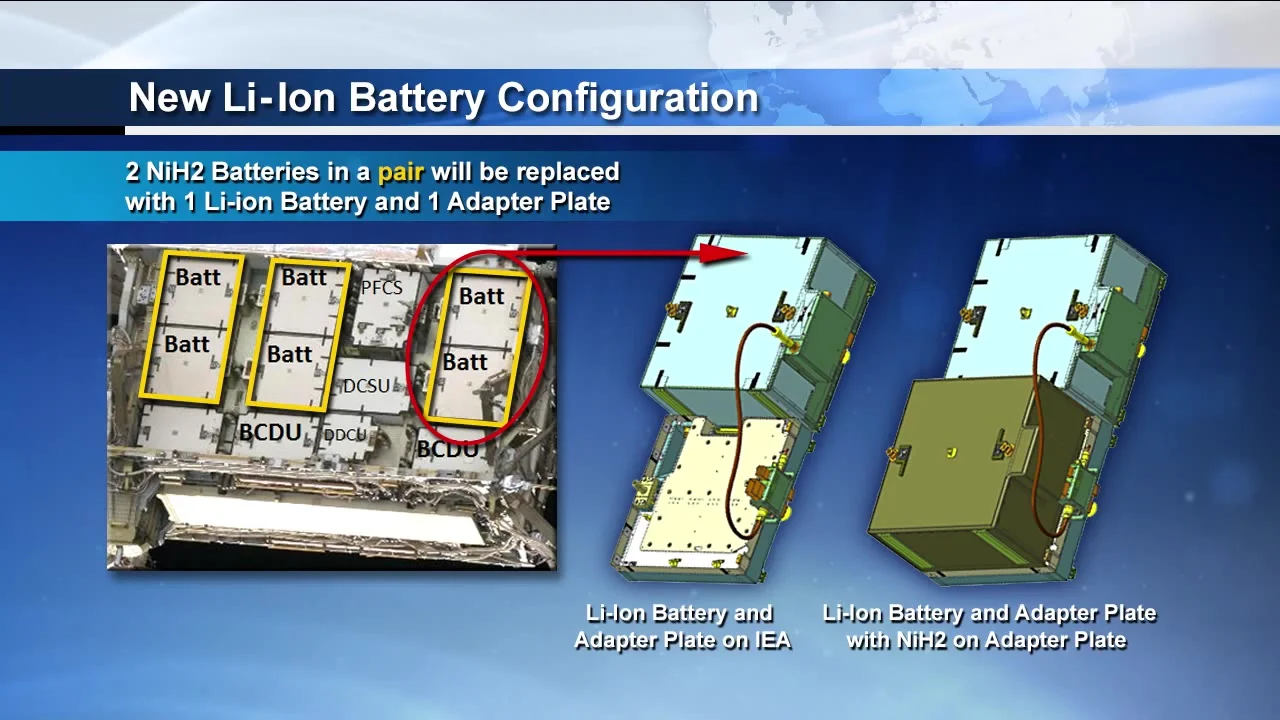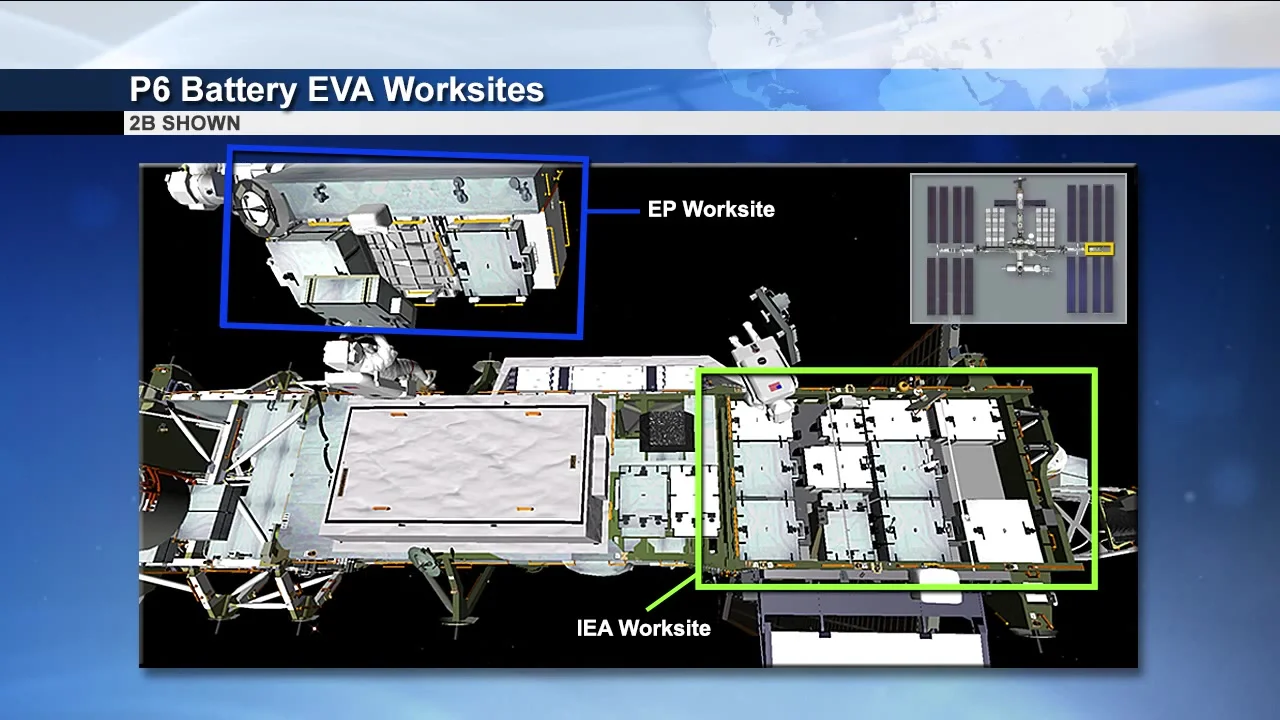Astronauts finish 1st spacewalk to replace P6 truss batteries
/Astronauts completed the first of up to five spacewalks to replace batteries on the far port side of the International Space Station’s truss and even had time for tasks planned for the next outing.
Expedition 61 Flight Engineers and NASA astronauts Christina Koch and Drew Morgan donned spacesuits Oct. 6, 2019, for a rare Sunday extravehicular activity to start the process of replacing the 12 nickel-hydrogen batteries on the P6 truss segment with six lithium-ion units. This is a continuation of a years long process to upgrade the outpost’s power supply, setting it up for operations well into the 2020s.
The Expedition 61 crew — which also includes European Space Agency astronaut Luca Parmitano (also the first Italian ISS commander), NASA astronaut Jessica Meir, and Russian cosmonauts Aleksandr Skvortsov and Oleg Skripochka — is slated to perform five spacewalks during the month of October to replace the batteries.
These batteries store power generated by the solar panels to be used while the outpost is in Earth’s shadow — about 45 minutes during each 90-minute orbit.
The space station’s truss about 110 meters long and composed of several pieces. Each end has four giant solar array wings with each of those having a power channel. In total, there are eight channels with the S6, S4, P4 and P6 truss segments each sporting two.
Additionally, each channel has three strings of two nickel-hydrogen batteries connected in series. Because the newer lithium-ion units are more efficient, only one battery is needed to replace each string. To complete the connection, an adapter plate is placed where the second old battery was located with cables to connect the new battery and complete the circuit.
This outing, dubbed U.S. EVA-56, officially started at 11:39 UTC Oct. 6, 2019, when the two astronauts switched their suits to battery power before exiting the Quest airlock. Koch wore the suit with red stripes while Morgan wore the one with no stripes.
For this spacewalk, the goal was to replace two nickel-hydrogen batteries on channel 2B on the P6 truss with a single lithium-ion unit and a battery adapter plate.
Despite being twice as efficient, the batteries are still large with each being nearly 200 kilograms.
The six new batteries and their adapter plates were brought to the outpost via the Kounotori 8 spacecraft, which launched to the ISS in late September. They were stored on the cargo ship’s Exposed Pallet inside its unpressurized logistics carrier.
Once berthed to the ISS, the pallet was extracted via the 17.6-meter-long Canadarm2 before being positioned as close to the P6 truss as possible.
This is the third spacewalk series dedicated to replacing the outpost’s old nickel-hydrogen batteries. The first two sets occurred in January 2017 and March 2019 and both included two EVAs focusing on the S4 and P4 power channels respectively.
The work area for the first two sets were closer to the center of the outpost and well within reach of Canadarm2. This allowed ground-based robotics teams to use the Dextre robotic “hand” add-on to the arm to do much of the work in advance of astronauts going out on spacewalks to finish the job.
However, the P6 and S6 truss segments are just out of reach of the arm and Dextre and thus requires astronauts to do nearly all of the work. This means it will take longer in order to manually “Shepard” each battery to and from the work area.
Once Koch and Morgan were out of the Quest airlock, they made their way to the P6 truss to begin their tasks. They worked in concert with Meir on the inside of the ISS who worked as the robotics operator to help move the pallet of batteries for Koch and Morgan to utilize.
The astronauts swiftly completed their primary objectives less than five hours into the planned 6.5-hour spacewalk. As such, they were able to perform several get-ahead tasks.
One major get-ahead was to remove another old nickel-hydrogen unit and place it on top of one of the battery adapter plates for permanent storage.
Because the Kounotori’s Exposed Pallet only has enough room for nine batteries for eventual disposal, three will need to remain at the outpost. This was the same for the previous sets of spacewalks. All told, 12 of the 48 original nickel-hydrogen batteries are slated to remain at the ISS in permanent storage.
U.S. EVA-56 concluded once the astronauts finished their work, returned to Quest, closed the outer hatch and began to repressurize the airlock. This brought the total spacewalk time to 7 hours and 1 minute.
Overall, this was the 219th spacewalk in support of ISS assembly and maintenance since 1998. According to NASA, astronauts and cosmonauts have spent a total of 57 days, 6 hours and 27 minutes working outside the outpost.
Up next is U.S. EVA-57, which is currently scheduled for about 11:50 UTC Oct. 11. Koch and Morgan are also expected to perform this spacewalk. However, Morgan is set to be the lead spacewalker.






